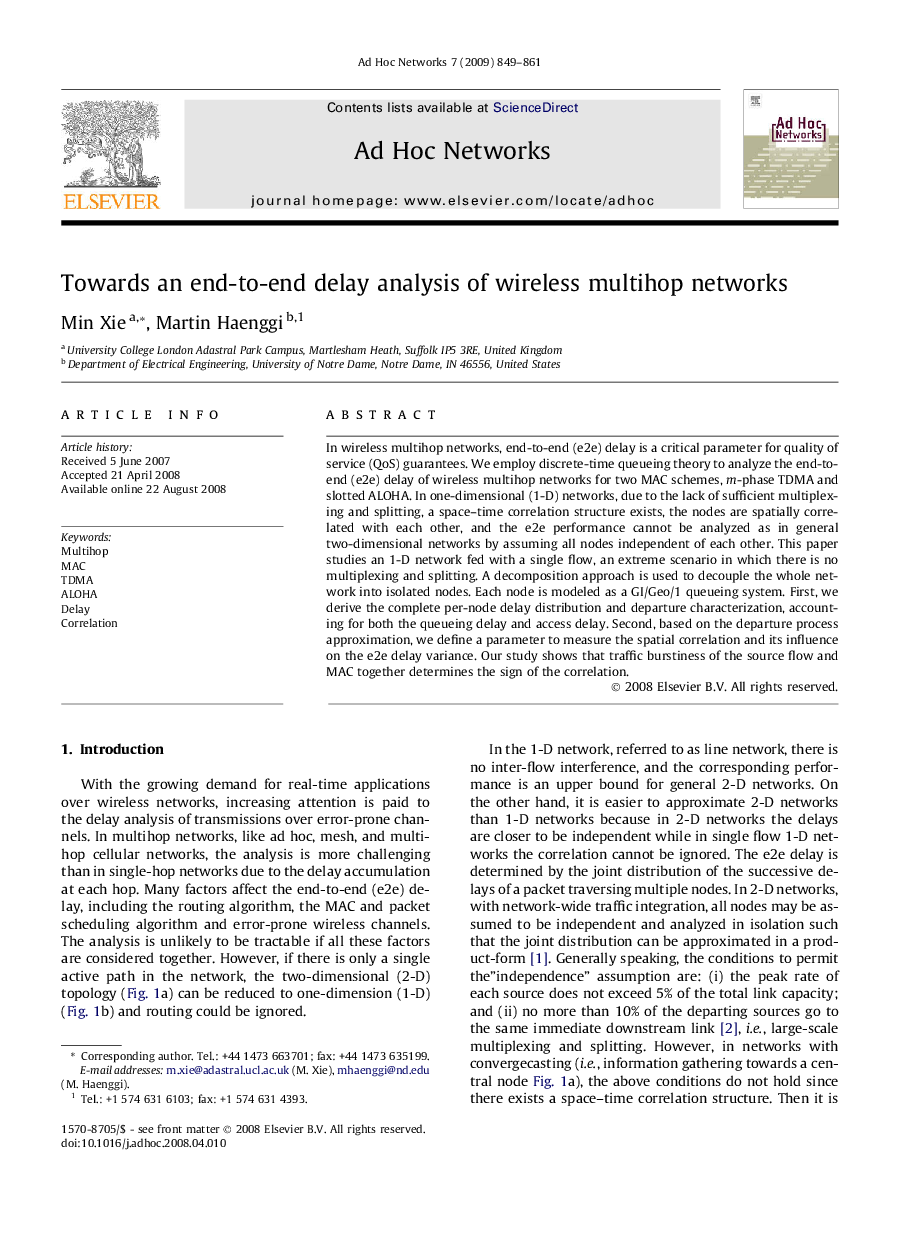| Article ID | Journal | Published Year | Pages | File Type |
|---|---|---|---|---|
| 446373 | Ad Hoc Networks | 2009 | 13 Pages |
In wireless multihop networks, end-to-end (e2e) delay is a critical parameter for quality of service (QoS) guarantees. We employ discrete-time queueing theory to analyze the end-to-end (e2e) delay of wireless multihop networks for two MAC schemes, m-phase TDMA and slotted ALOHA. In one-dimensional (1-D) networks, due to the lack of sufficient multiplexing and splitting, a space–time correlation structure exists, the nodes are spatially correlated with each other, and the e2e performance cannot be analyzed as in general two-dimensional networks by assuming all nodes independent of each other. This paper studies an 1-D network fed with a single flow, an extreme scenario in which there is no multiplexing and splitting. A decomposition approach is used to decouple the whole network into isolated nodes. Each node is modeled as a GI/Geo/1 queueing system. First, we derive the complete per-node delay distribution and departure characterization, accounting for both the queueing delay and access delay. Second, based on the departure process approximation, we define a parameter to measure the spatial correlation and its influence on the e2e delay variance. Our study shows that traffic burstiness of the source flow and MAC together determines the sign of the correlation.
